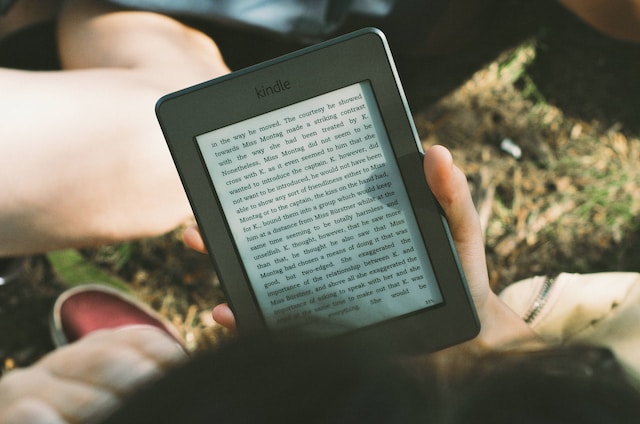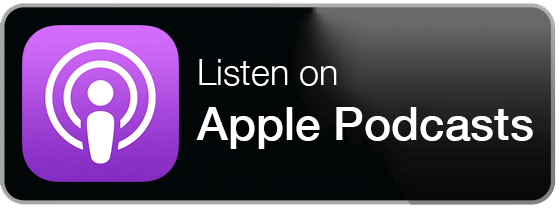Cover photo by Jaredd Craig on Unsplash
Today’s Focus of Attention is reader-supported. We sometimes include products we think are useful for our readers. If you buy through links on this page, we may earn a small commission.
Greetings, fellow bibliophiles!
Ever found yourself standing in a bookstore or hovering the “Buy Now” button online, torn between the allure of a physical book and the convenience of an e-book?
Ah, the eternal question: “To hold or to swipe?”
In the realm of physical books, it’s a sensory ballet – a dance of fingertips across the textured tapestry of pages, tracing each line like a lover’s whisper.
It is the olfactory embrace of ink and paper, a scent that tells tales of both fresh chapters and time-worn tomes.
The subtle ritual of moistening your finger to tenderly flip to the next page, and even the bittersweet sting of an occasional paper cut, a small tribute to your devotion.
And the grand finale – a rite of passage, if you will. The moment when you reverently place the completed tome on a sprawling, lustrous bookshelf, as if laying a crown jewel in a treasure chest of literary wonders.
“I love the smell of book ink in the morning.” Umberto Eco
On the flip side, there’s the appeal of the e-book – a digital canvas glowing in the palm of your hand, with its cold and sleek screen as a moonlit lake.
This debate has been a tale as old as 1971, when the first e-book flickered into existence, challenging the ink and paper dominion.
For me, the essence lies not in the medium but in the act – the sacred communion of reading, by any means necessary.
Today, we shall wade into the depths of this argument, not to sway your choice, but to revel in the sheer joy of literary exploration.
But before we embark on this journey, let us unfurl the scrolls of history, tracing the lineage of both physical tomes and their digital counterparts.
The First Published Book
Books appeared with the birth of writing itself on tablets, scrolls, and papyrus.
But the current format, with separate sheets linked, was named a codex, which replaced the scroll between the 2nd and 4th centuries.
The oldest known printed book in the world was the Buddhist text “Diamond Sutra” in China back in the 8th century CE.
The laborious method used to print such a book was called ‘woodblock printing’ where symbols were carved into a wooden block and then inked and pressed onto paper.
Historians debate about whether the “Diamond Sutra” is truly the first published book. They believe that earlier books may have been printed before, but there’s no evidence to support this claim.
In Europe, it took a little longer.
In the 15th century, around 1436, Johannes Gutenberg invented the printing press and started the printing revolution.
Before that, books were handwritten and very expensive. So, only the wealthy could afford them.
The printing press made it possible to publish in large quantities, making reading more affordable and accessible to the public.
The earliest work to be printed in Europe was the Gutenberg Bible in 1455. That happened to be a breakthrough in the history of publishing and helped to spread knowledge and literacy throughout the continent.
“I still love books. Nothing a computer can do can compare to a book. You can’t really put a book on the Internet.” Ray Bradbury

The First E-Book Ever
In 1971, a student at the University of Illinois named Michael S. Hart digitised the US Declaration of Independence, turning it into the first e-book published.
Hart’s goal was to make books available to everyone, irrespective of their income or location. The same year, Hart founded “Project Gutenberg”, a volunteer effort to digitise printed works and have them accessible online.
Project Gutenberg became the father of free e-publications. After the US Declaration of Independence, Hart added more volumes to the collection.
Today, Project Gutenberg has over 60,000 e-books, including classic novels, poetry, non-fiction, and more, and all of them are in the public domain.
In the beginning, electronic literature was simple text files that early e-readers read on small computer screens.
However, as technology improved, e-books and e-readers became more popular.
Today, digital books are a major part of the publishing industry, and millions of people read them on smartphones, tablets, and dedicated e-readers.
The boom of e-books started in the late 2000s, with the release of the Amazon Kindle in 2007. It was the first affordable and easy-to-use e-reader and quickly became popular.
“Moby Dick” by Herman Melville initiated the e-bookshelf for Kindle on 19 November, 2007, the same day that the Kindle was released.
In 2009, Apple launched the iPad, which also gained traction as a platform for reading digital literature. And in 2010, Google introduced its own e-bookstore, Google Play Books.
Now, let’s move on with the pros and cons of both physical and e-books.
“I have a Kindle, but I still prefer holding a book. I will always choose the book over the remote or Kindle.” S.E. Hinton
The Case for Physical Books
Advantages of Physical Books
Sensory Experience
The intoxicating aroma of freshly printed pages and the tactile joy of leafing through a book – it’s a love affair that never ends.
No Battery Required
Physical books have their own energy; no need to charge. You can read them anytime.
Aesthetics
A well-stocked bookshelf is a beautiful addition to your home decor.
Disadvantages of Printed Books
Bulky
Print editions are heavy and take up space, making them less convenient for travel.
Higher Cost
New releases are more expensive than their e-book counterparts because of paper, printing, and distribution.
“Books are no more threatened by Kindle than stairs by elevators.” Stephen Fry
The Case for E-Books
Benefits of E-Books
“The great thing about e-books is instant access to many titles.” Nicholas Sparks
Portability
Imagine carrying the entire works of Shakespeare or J. K. Rowling in your pocket. With e-books, your literary world knows no bounds.
Adjustable Text
You can change the font size, style, and background colour to suit your preferences.
Instant Access
As soon as you purchase or download your e-book, you are ready to embark on reading it.
“E-books are great for instant gratification – you see a review somewhere of a book that interests you, and you can start reading it five minutes later.” Anne Lamott
Drawbacks of E-Books
Battery Life
E-books need a device that sooner or later needs to be charged.
Eye Strain
Excessive screen time may cause vision problems, although e-ink technology has mitigated this issue to a certain degree.

Choosing Between Physical Books and E-Books
What’s Your Reading Environment?
If you love flipping pages by the beach or in the bath, a physical book is a safer bet. Just protect it with a case.
How Often Do You Travel?
The portability of e-books is a game-changer if you’re always on the go.
Do You Have Storage Space?
Regarding location, storing digital content is less of a hassle.
“I read books both as e-books and as physical books. I like the convenience of an e-book, but I like the physicality of an actual book.” Neil Gaiman
Next Steps for Book Lovers
Try Both
Explore both universes. New to e-books? Read a couple before deciding. Many classics are available for free online.
Consider the Genre
Some genres, like graphic novels, are better suited to one format over the other.
Check for Deals
Both physical and e-books go on sale. Keep an eye on discounts to make your reading habit more affordable.
“I love both print and digital. I don’t think one replaces the other. They serve different needs.” James Patterson
Final Thoughts
The “physical books vs e-books” debate doesn’t have a one-size-fits-all answer. It comes down to your personal preferences, lifestyle, and customs.
Both formats have their merits, and many people find a happy medium by using both.
You can have a bookshelf with hundreds of books but read them on an electronic device to preserve the physical ones.
So, it doesn’t matter if you’re a fan of the smell of ink and paper or the convenience of a digital library, the most important thing is that you’re reading.
In the end, whether bound by covers or confined to a screen, a captivating story remains just that – a treasure to be cherished, in whichever format you choose.
As you turn the page on this debate and continue your own literary journey, may the words be with you.
“I don’t think digital will ever replace print, but I think both will co-exist. Each has its own value.” J. K. Rowling


